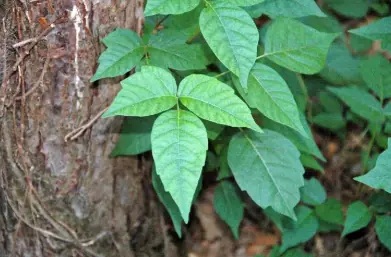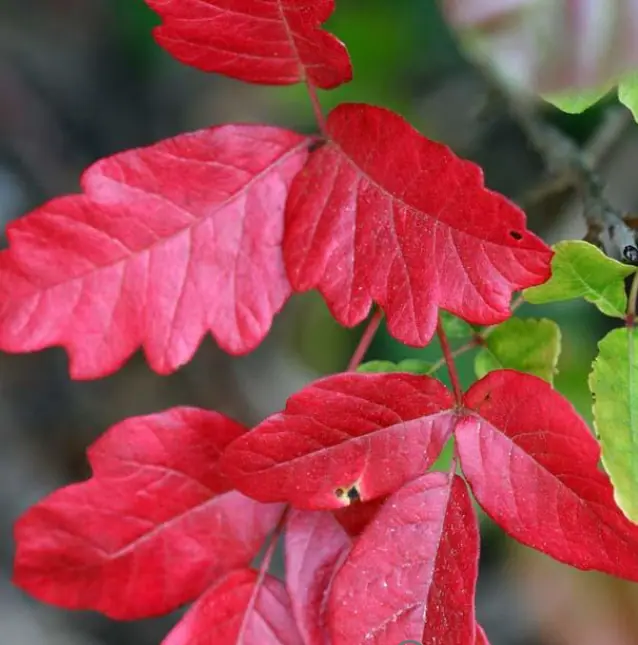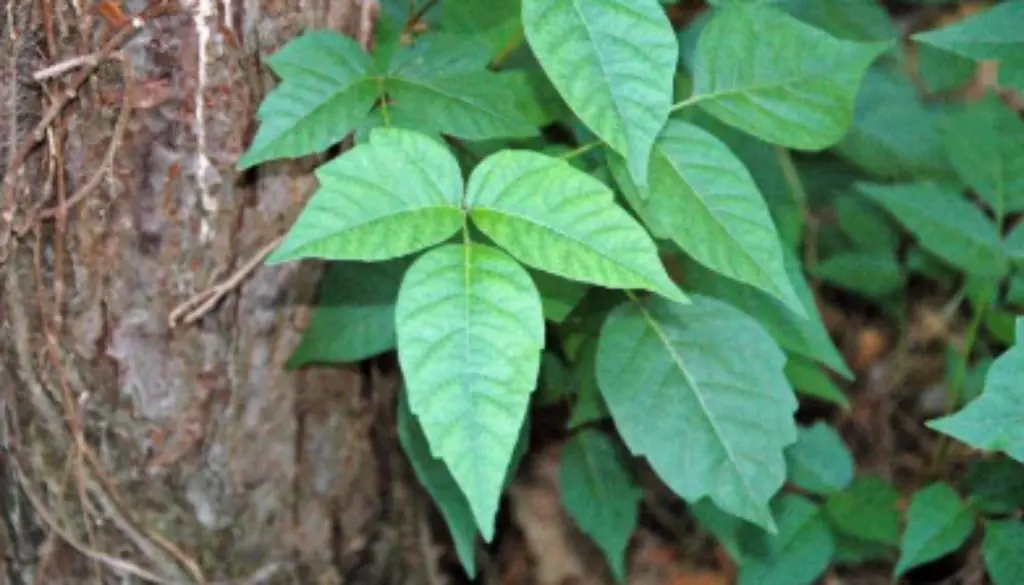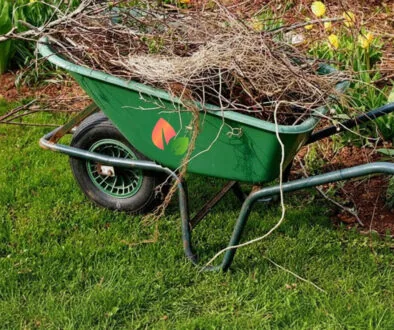Poison Ivy in Your Garden or Yard
With Tips for ID, Elimination, and Prevention
By: Donna Hibbs, Fransen Group
Poison Ivy – “Leaves of three, let it be!”
Ah, summertime—the perfect season for weeding, planting, and enjoying your garden. But among your roses,
rhododendrons, and tomatoes might lurk an uninvited, itch-inducing guest: poison ivy. This pesky plant (and its cousins) can turn your peaceful garden time into an irritating nightmare—literally.
Let’s explore how to identify, understand, and eliminate poison ivy from your property safely.
Know Your Itchy Enemies – Poison Ivy vs. Poison Oak
Poison Ivy
- Appearance: Typically has three leaflets, with the center leaf on a longer stalk. Edges may be smooth, toothed, or lobed.
- Growth: Can appear as a vine, groundcover, or small shrub.
- Color: Leaves are green in summer, turning reddish-orange in fall.
- Location: Common in shady, wooded areas, along fence lines, or at the edges of landscaped beds.

Poison Oak
Although less common in Kentucky, poison oak is present in some areas.
- Appearance: Looks more like a small shrub than a vine. Also has three-leaf clusters, often fuzzier than poison ivy.
- Growth: Grows upright and bushy.
- Location: Prefers drier, sunnier spots than poison ivy.

A Side Note – Not Poisonous: Virginia Creeper
One common lookalike is Virginia creeper, which is NOT poisonous. Key difference: It has five leaflets, not three. Each leaflet can have finely toothed edges, unlike poison ivy, which has lobes or larger teeth. It can be very difficult to tell the difference. A native vine usually found around fences, climbing trees, and walls.
Virginia Creeper – note the 5 leaflets
- While Virginia creeper can cause mild irritation in sensitive individuals, it lacks the oil that makes poison ivy toxic.
What Makes Poison Ivy So Itchy?
The culprit is a sticky, invisible oil called urushiol, found in the leaves, stems, and roots of poison ivy, oak, and sumac.
Even brushing against the plant can transfer this oil to your skin, tools, or clothing, leading to an itchy rash that may last for days or even weeks.
Fun (not-so-fun) fact: Urushiol remains active on surfaces for years, so always clean your gear after exposure.
Got It? Here’s How to Get Rid of It
1. Chemical Control (Herbicides)
- Use a product containing glyphosate or triclopyr, applied directly to the leaves when the plant is actively growing.
- Cut large vines near the base and treat the freshly cut stump with herbicide.
- Always follow label directions and protect nearby desirable plants from overspray.
2. Manual Removal (Carefully!)
- Gear up: Wear long sleeves, gloves, and eye protection.
- Use hand tools to dig out the roots—urushiol is present even in dead roots.
- Bag all removed material in sealed trash bags.
- NEVER burn it—inhaling urushiol can cause serious lung inflammation.
3. Smothering Small Patches
- Cover with black plastic, newspaper, cardboard, and top with mulch or soil.
- Starving the plant of sunlight takes weeks to months. Patience pays off!
4. Let Goats Do the Dirty Work
- Goats are immune to urushiol and love to eat poison ivy.
- They can clear large, overgrown patches, but:
- You’ll need to fence them in.
- Don’t pet them after grazing—the oil can remain on their fur.
- No, it doesn’t transfer to their milk.
Goats make great eco-friendly weeders
5. Hire a Pro—Like Us!
Some infestations are too large or too tangled to tackle alone.
At Fransen Group, we specialize in the safe, effective removal of poison ivy and other invasive species—from delicate landscapes to wild wooded edges.
We’ll help you reclaim your space without the rash!
Don’t Wait for the Itch
If you see something suspicious in your yard—three-leaved and thriving—don’t take chances. Identify it early, take action carefully, and protect yourself and your loved ones.
Need help identifying or removing poison ivy from your property?
Contact us at Fransen Group today, so you can enjoy summer itch-free.
Contact us today for all your Landscape and Horticultural services




